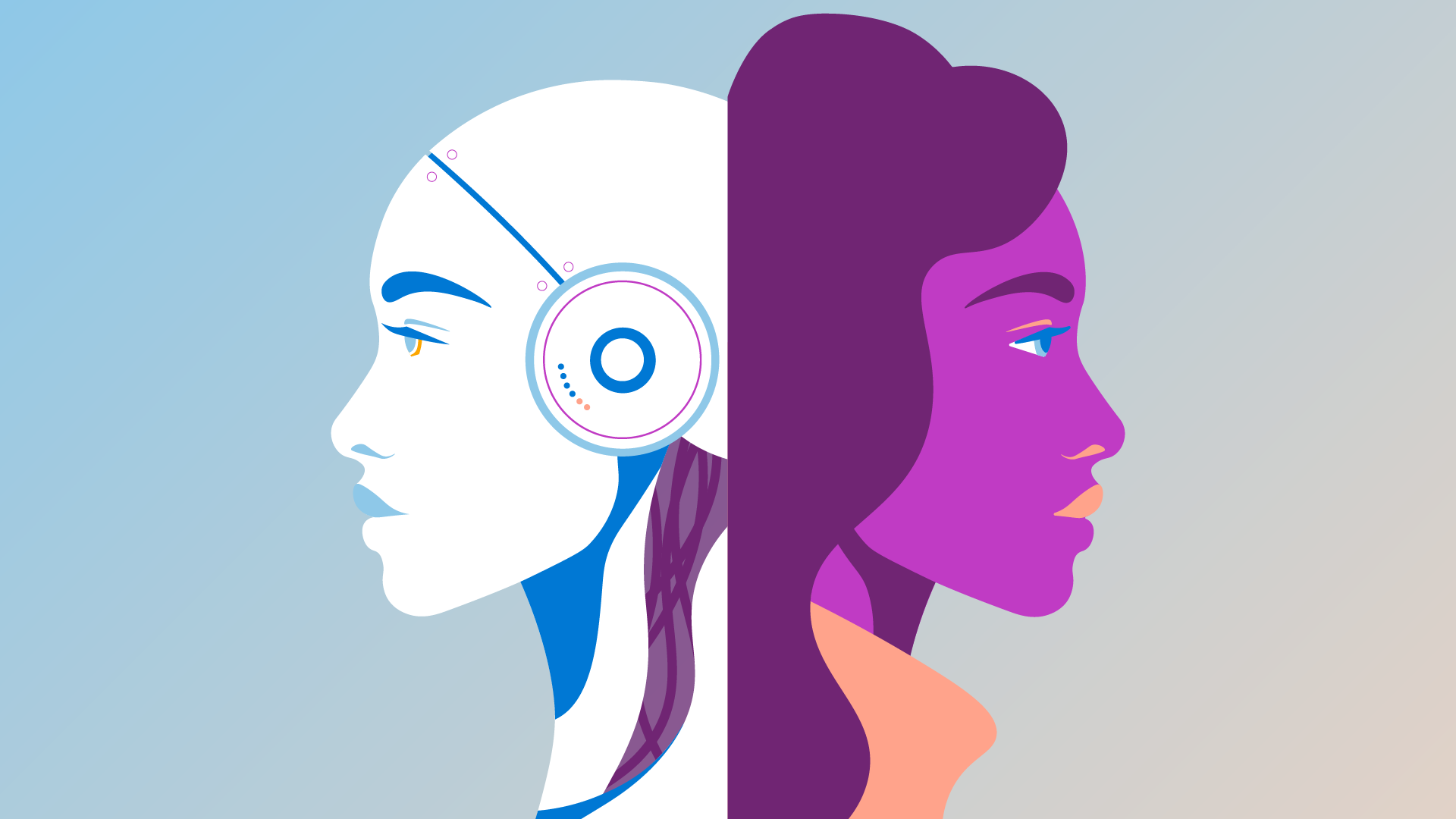Summary
“If I’m running on empty, I can’t be the doctor my patients deserve,” said Dr. Theresa Nguyen. Dr. Nguyen, who is the Chair of Pediatrics at Greater Baltimore Medical Center and leads the Medical Staff Wellness Committee, joins us to discuss the culture of wellness at the workplace for physicians. She opens up about her own personal journey dealing with the stress of perpetual burnout, delving into the impact on her life not only as a physician, but also as a mother and human being. For Dr. Nguyen, utilizing the capabilities of an AI assistant like DAX Copilot is about much more than just being efficient in the workplace.
Visit aka.ms/ddx-podcast to view a DAX Copilot demo today.

Dr. Theresa Nguyen, MD
Dr. Nguyen is the Chair of Pediatrics at the Greater Baltimore Medical Center (GBMC) and an Assistant Professor of Pediatrics at the Johns Hopkins School of Medicine. She has been a pediatrician for three decades. Dr. Nguyen practices integrative medicine, a whole-person approach to healing, incorporating all aspects of lifestyle (mind-body, nutrition, sleep) in partnership with her patients and families. She is passionate about mental and physical wellbeing for her patients, their families, and her physician colleagues. Dr. Nguyen helps parents find joy and thrive in their parenting journey through her biweekly Practical Parenting Podcast. She shares her pediatric and wellness expertise with local and national television and print media. Dr. Nguyen serves as the co-chair of the Mental Health Committee of the Maryland chapter of the American Academy of Pediatrics (AAP) and the Education Committee of the Section on Integrative Medicine of the AAP. She serves as a faculty member for the AAP Anxiety and Depression ECHO. She is the founding chair of the GBMC Medical Staff Wellness. Dr. Nguyen volunteers in the Walk with a Doc program through Baltimore’s Backyard Basecamp.
Transcript
DDx SEASON 11, EPISODE 2
Burnout, Interrupted
RAJ: This season of DDx is produced in partnership with and sponsored by Microsoft. DISCLAIMER: In this episode, we feature a conversation with Dr. Nguyen. Dr. Nguyen is an unpaid user of DAX. She has received no compensation for participating in this episode, and the views expressed are her own.
Dr. Nguyen: I barely had any energy, even after waking up in the morning. And then the more scary experience is… I had some interactions with patients where I felt I was watching myself have the interaction with the patient. It was as if I was outside of the situation and looking in on myself. It was robotic. It was definitely an out of body disengaged experience. And that’s when I knew that I was burnt out. And I was tempted to think that I should leave medicine and do something else, that I’d made a really wholly wrong decision for my whole entire life.
RAJ: This is DDX, a podcast from Figure 1 about how doctors think. I’m Dr. Raj Bhardwaj. This season, we’re looking at a new AI solution for doctors. It’s called DAX Copilot. The idea is simple: you walk into the exam room and start talking with your patient.
No typing.
No notepad.
Just a conversation.
While you’re focused on the patient, DAX listens.
It records the visit, drafts the medical note, and promises to save you hours of charting. That’s the pitch.
But does it work?
We’re asking doctors what it’s really like to use this technology.
Does it help?
Does it get in the way?
And what does it mean for the doctor-patient relationship when DAX is in the room too? Today, we’re talking about a problem that’s driving many doctors out of the profession: Burnout.
We’ll explore what burnout looks like, how it impacts both doctors and patients, and whether by taking on some of the administrative burden, DAX Copilot can help restore balance without creating new problems.
After years as a care provider, Dr. Nguyen is no stranger to burnout. She understands the toll it can take.
Dr. Nguyen is the Chair of Pediatrics at Greater Baltimore Medical Center and leads the Medical Staff Wellness Committee.
CHAPTER 1: THE PHYSICIAN’S CHALLENGE
Dr. Nguyen: I was pouring from an empty cup every day. I would wake up, and there’d be a little bit of fear about going to work, which had not been before, and then looking at the schedule and just thinking, how can I get through my day?
RAJ: As a primary care pediatrician, Dr. Nguyen’s day was chock-a-block with patients. But when the clinic’s doors finally closed, her work didn’t end.
She’d spend another two to three hours buried in documentation, logging every detail of every visit.
Dr. Nguyen: It’s endless documentation and it’s taking away our free time because our free time is our time after we leave work. I go home and eat dinner with my family – so I don’t miss dinner – but then after dinner, I have to go back to all those notes that I haven’t completed. It was: Work, sleep, work, sleep.
RAJ: When she got home, her second shift started: Being a mom.
The workload was smothering. Eventually, it caught up with her.
Dr. Nguyen: It felt like I was in a hamster wheel and I did not feel that I was doing well, in either of my primary areas, being a physician or being a mother. And I started withdrawing from my patients.
RAJ: That was her wake up call.
Dr. Nguyen: I realized that it would take me two to three hours after seeing patients to complete my notes. I was removed and I had nothing left to give. So that was the wakeup call. And I said, okay we’re going to have to do something. You can’t be just a physical body seeing patients and not be emotionally and mentally engaged with them. So how was I going to change that narrative, change that scenario for myself?
RAJ: She tried all the usual fixes for burnout—yoga, meditation, stress relief techniques—but it wasn’t getting to the heart of the problem.
Dr. Nguyen: The system. It’s not conducive to the physician taking care of themselves. It’s all the outside factors, right? Factors that are beyond my control. You’re here to take care of the patient and you’re going to do everything in your power to take the best care of your patient, but physician heal thyself. You cannot pour from an empty cup.
RAJ: And while Dr. Nguyen felt isolated in her experience, she came to realize she wasn’t alone.
Dr. Nguyen: And it wasn’t until I was better and I found ways to cope that I was able to see, oh, this is systemic. The majority of us feel this way. What do we need to do? And so the solution is not just based on the individual. It’s the whole system.
RAJ: Burnout like Dr. Nguyen’s is far from rare—according to an American Medical Association 2023 study–nearly 50 percent of physicians reported feeling its effects.
It’s systemic; rooted in how care is delivered and documented.
And part of that problem?
The hours spent charting.
Dr. Nguyen: I can tell you, if you do any surveys and we’ve done quite a few surveys through the medical staff wellness committee, one of the biggest factors for burnout for docs is administrative work.
CHAPTER 2: RESOLUTION – TECHNOLOGY AS A TOOL, NOT THE HERO
RAJ: That’s where DAX hopes to deliver – as a tool, not a silver bullet.
It’s designed to relieve some of that burden, decrease stress, free up doctors to spend more time with their patients, and have a life outside the office.
Dr. Nguyen: I felt like this technology really had a huge impact on my stress at work. The first time that I was using DAX I saw 16 patients and I was finished within 5 or 10 minutes after all the patients had left the office. In the past, that would be, oh, probably an hour and a half of additional documentation and typing things in…That’s life changing.
RAJ: Here’s how DAX works—it listens to conversations between doctors and patients, creating structured notes automatically.
But as Dr. Nguyen explains, there are a few things to keep in mind.
Dr. Nguyen: Yeah, so the trade off is, you have to identify the sex of the patient so just identify, this is a six year old male patient, six year old boy, girl, whatever. Still once in a while, it misunderstands something. So you’ll have to correct it. One of my colleagues didn’t really like this technology at first because this colleague said, this isn’t my voice in the note, but I can overlook whether it’s my voice speaking in the note. The facts are there. The story is correct. 5
RAJ: For a lot of us, technology has always felt like just one more thing to deal with. But for Dr. Nguyen, this felt different.
Dr. Nguyen: This is one of the few times where I feel like technology has been helpful to the doctors. This is the time that technology is actually helping us. We are able to spend more quality time with our patients. It’s decreasing our outside of work time. It’s helping us with our wellness.
RAJ: According to Dr. Nguyen, user response at her hospital has been very positive.
Dr. Nguyen: So our organization is surveying physicians who’ve used it to find out what they like and what they don’t like. The physician data is very encouraging. Overall everyone likes how much it saves them from pajama time. It’s the documentation, the administrative work.
RAJ: While DAX can make a big difference for care providers, addressing burnout takes more than just one tool—it requires a broader focus on workplace culture.
Dr. Nguyen: There’s the culture of wellness in the organization that you work for. So they promote wellness. Is there adequate vacation? What’s happening in the workplace? Do people say, hey, I’m not going to send out emails after a certain time and I’m not going to expect you to respond until the next morning. Are there boundaries and are there things that are implemented in your workplace to help you? So that’s part of the culture of wellness and the efficiency of practice. Even doctors need time off.
RAJ: Thanks to Dr. Nguyen for speaking with us. This is DDX, a podcast by Figure 1. Figure 1 is an app that lets doctors share clinical images and knowledge about difficult-to-diagnose cases.
I’m Dr. Raj Bhardwaj, host and story editor of DDX. Head over to figure1.com/ddx where you can find full show notes, speaker bios and photos.
This season of DDX was produced in partnership with and sponsored by Microsoft.
Thanks for listening!





